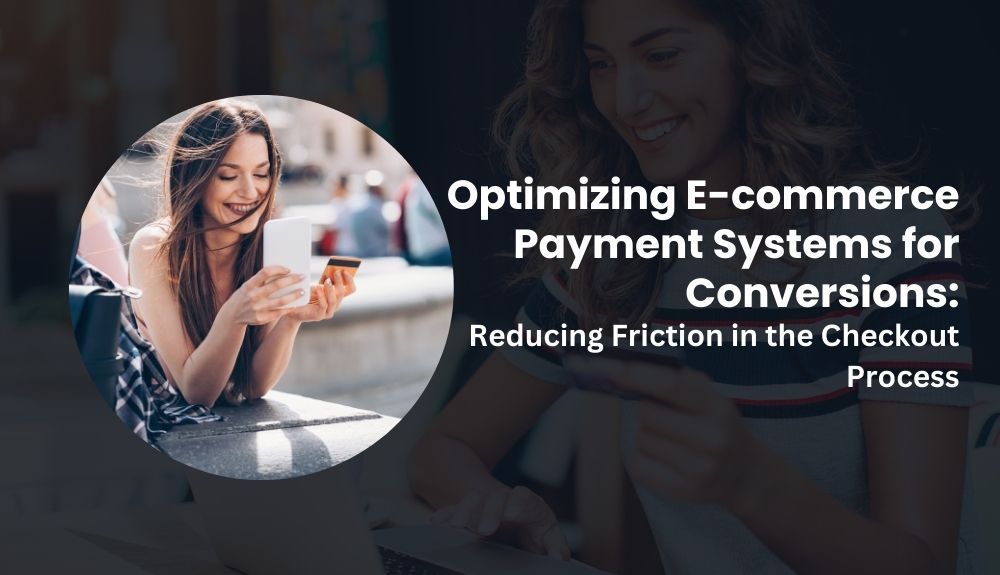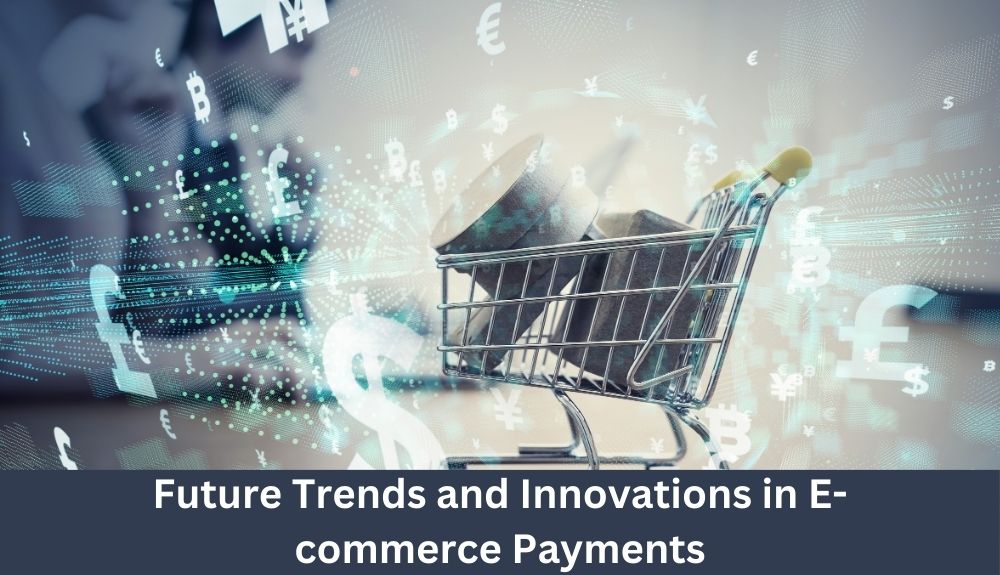
By max February 3, 2024
Introduction to E-commerce Payment Systems
Welcome to the exciting world of e-commerce payment systems, where convenience reigns supreme and checkout processes can make or break a sale. In today’s fast-paced digital era, consumers expect seamless transactions that are as smooth as sliding down a water slide on a scorching summer day.
But alas, all too often we find ourselves stuck in the friction-filled checkout process maze – forms that seem to never end, multiple authentication steps that leave us feeling like secret agents trying to access classified information, and error messages popping up at the most inconvenient moments. It’s enough to make even the most patient shopper abandon their virtual cart and seek solace in brick-and-mortar stores.
Fear not! This blog post is here to guide you through the perplexing realm of optimizing e-commerce payment systems for conversions by reducing friction in the checkout process. We’ll explore common pain points experienced by customers during online purchases, delve into consumer behavior and preferences when it comes to payments, uncover strategies for streamlining your checkout process, examine real-life case studies of successful optimization efforts, discuss the role of technology in revolutionizing payments, peek into future trends and innovations shaping e-commerce transactions – all leading towards improving customer experience and boosting conversion rates.
So buckle up (or rather unbuckle those payment hurdles), because we’re about to embark on a journey that will equip you with valuable insights and practical tips for creating an effortless shopping experience that keeps your customers coming back for more. Get ready to unlock the secrets behind turning clicks into conversions!
Common Friction Points in the Checkout Process
When it comes to online shopping, the checkout process can make or break a sale. Unfortunately, many e-commerce websites still have friction points that hinder conversions and drive potential customers away. Let’s take a closer look at some of these common pain points.
One of the most frustrating aspects for shoppers is having to create an account before making a purchase. While businesses may want customer data for future marketing efforts, forcing users into this step can lead to cart abandonment. Offering guest checkout options can help alleviate this friction point and streamline the process.
Another issue that often arises during checkouts is complicated and lengthy forms. Requiring shoppers to fill out multiple pages of personal information can be overwhelming and time-consuming, leading to frustration and ultimately lost sales. Simplifying forms by only asking for essential details or incorporating autofill features can significantly reduce friction.
Payment security concerns also contribute to cart abandonment rates. Customers are rightfully cautious when sharing their financial information online, so displaying trust symbols such as SSL certificates or payment logos can instill confidence in your website’s security measures.
Additionally, hidden fees or unexpected costs at checkout are major turn-offs for consumers. Being transparent about shipping fees, taxes, and any additional charges upfront helps build trust with customers and prevents last-minute surprises that could lead them to abandon their carts.
Slow loading times during the payment process are another significant source of frustration among shoppers. If your website takes too long to load each page within the checkout flow, customers may become impatient and leave without completing their purchase. Ensuring fast-loading speeds through optimized web design practices will greatly enhance user experience.
Furthermore, limited payment options pose yet another obstacle in converting visitors into buyers. Different people prefer different payment methods – credit cards, PayPal, digital wallets – offering multiple choices accommodates diverse customer preferences while reducing friction at checkout.
Addressing these common friction points in the checkout process is crucial for optimizing e-commerce conversion rates. By streamlining the steps, simplifying forms, ensuring security, providing
Understanding Consumer Behavior and Preferences

When it comes to optimizing e-commerce payment systems for conversions, one crucial aspect is understanding consumer behavior and preferences. After all, the checkout process is where customers make their final decision to complete a purchase or abandon their carts.
Consumer behavior can vary widely from one individual to another, which makes it essential for businesses to analyze and adapt accordingly. One way to gain insights into consumer behavior is by studying data such as browsing patterns, abandoned cart rates, and customer feedback.
Preferences also play a significant role in influencing consumers’ decisions during the checkout process. Some customers may prioritize convenience and prefer quick payment options like digital wallets or saved payment information. Others may value security above all else and be more inclined towards traditional methods like credit card payments.
To effectively optimize the checkout process, businesses need to cater to these diverse preferences. This could involve offering various payment options that align with different customer needs or implementing features that enhance overall user experience.
By gathering data on consumer behavior and staying informed about evolving preferences, businesses can continually refine their e-commerce payment systems for better conversion rates. This leads to higher customer satisfaction levels and increased sales opportunities.
Remember: Understanding consumer behavior goes beyond just collecting data; it’s about using those insights strategically to tailor your e-commerce payment systems accordingly!
Strategies for Reducing Friction in the Checkout Process
When it comes to e-commerce, a smooth and seamless checkout process is crucial for driving conversions. However, many online retailers still struggle with high cart abandonment rates due to friction points during this critical stage. So, how can you reduce friction and improve your conversion rates? Here are some effective strategies:
1. Simplify the process: Lengthy and complicated checkout forms can be overwhelming for customers. Minimize the number of required fields and make sure that each step is easy to understand.
2. Offer guest checkout: Not everyone wants to create an account just to complete a purchase. By providing a guest checkout option, you eliminate unnecessary steps and streamline the process.
3. Provide multiple payment options: Consumers have different preferences when it comes to payment methods. Offering various options such as credit cards, digital wallets, or even installment plans can cater to different needs and increase conversions.
4. Display trust signals: Security concerns are one of the main reasons why shoppers abandon their carts at checkout. Showcasing trust indicators like SSL certificates or secure payment logos instills confidence in customers.
5. Optimize for mobile devices: With more people shopping on their smartphones, it’s essential to ensure that your checkout process is mobile-friendly. Make sure buttons are large enough to tap easily and optimize page loading speed.
By implementing these strategies, you can significantly reduce friction in your e-commerce payment systems and pave the way for higher conversion rates! Stay tuned as we explore real-life case studies of successful optimization next!
The Role of Technology in Streamlining Payments
In today’s fast-paced digital world, technology plays a crucial role in streamlining the payment process for e-commerce businesses. From mobile wallets to contactless payments, technological advancements have revolutionized the way we make purchases online.
One key technology that has gained significant traction is blockchain. This decentralized ledger system ensures secure and transparent transactions while eliminating intermediaries, reducing costs, and speeding up settlement times. Additionally, biometric authentication methods such as fingerprint or facial recognition add an extra layer of security to protect customers’ sensitive information.
Artificial intelligence (AI) also plays a vital role in optimizing payment systems. AI-powered chatbots can assist customers throughout the checkout process by answering queries promptly and providing personalized recommendations based on their preferences and past purchase history.
Furthermore, machine learning algorithms analyze vast amounts of data to detect fraudulent activities in real-time, minimizing chargebacks and protecting both merchants and consumers from potential fraudsters.
Moreover, with the rise of Internet of Things (IoT), connected devices can now facilitate seamless transactions without human intervention. Smart home devices like voice assistants enable users to make purchases effortlessly using just their voice commands.
To enhance customer experience further, many e-commerce platforms integrate with various payment gateways that accept multiple forms of payment including credit cards, debit cards, digital wallets like PayPal or Apple Pay, cryptocurrencies like Bitcoin or Ethereum – giving customers more flexibility when it comes to choosing their preferred method of payment.
As technology continues to evolve rapidly, new innovations are emerging that promise even greater convenience for both merchants and consumers. For instance,
near-field communication (NFC) technology allows users to complete transactions simply by tapping their smartphones against compatible terminals – making cashless payments quicker than ever before!
Future Trends and Innovations in E-commerce Payments

As technology continues to evolve at a rapid pace, so does the world of e-commerce payments. In the near future, we can expect to see several exciting trends and innovations that will further enhance the checkout process for online shoppers.
One trend that is gaining momentum is the use of mobile wallets. With more people relying on their smartphones for everyday tasks, it only makes sense that they would also want to use them for making payments. Mobile wallets such as Apple Pay and Google Pay allow users to securely store their payment information and make purchases with just a few taps on their device.
Another innovation that holds promise in the e-commerce payments space is biometric authentication. Instead of having to remember passwords or enter credit card details, consumers can simply use features like fingerprint or facial recognition to verify their identity. This not only provides added convenience but also increases security by reducing the risk of fraudulent transactions.
Cryptocurrencies are also likely to play a bigger role in e-commerce payments in the future. As digital currencies gain wider acceptance, we may start seeing more online retailers accepting cryptocurrencies as a form of payment. This could open up new opportunities for global commerce by eliminating currency conversion fees and delays associated with traditional banking systems.
Additionally, voice-activated assistants such as Amazon’s Alexa or Apple’s Siri are becoming increasingly popular among consumers. Integrating these voice-enabled devices with e-commerce platforms has become an exciting area of exploration for many companies. Imagine being able to shop online using just your voice commands – it’s no longer science fiction but an upcoming reality!
Artificial intelligence (AI) will continue revolutionizing the way businesses handle payments. AI-powered chatbots can provide personalized customer support during the checkout process while machine learning algorithms analyze data patterns to detect fraud quickly.
Conclusion
In this rapidly evolving digital landscape, optimizing e-commerce payment systems has become crucial for businesses looking to maximize conversions and provide a seamless checkout experience. By understanding the common friction points in the checkout process and aligning with consumer behavior and preferences, merchants can significantly reduce barriers to purchase and increase customer satisfaction.
Throughout this article, we explored various strategies for reducing friction in the checkout process. From simplifying the user interface to offering multiple payment options, each strategy aims to enhance the user experience and streamline payments. Additionally, we examined case studies of successful optimization implementations that resulted in increased conversion rates.
Technology plays a significant role in streamlining e-commerce payments. With advancements like mobile wallets, contactless payments, and artificial intelligence-powered fraud detection systems, businesses can offer secure and convenient payment methods while minimizing risks associated with fraudulent activities.
Looking ahead at future trends and innovations in e-commerce payments, we can expect further integration of emerging technologies such as biometric authentication through facial recognition or fingerprint scanning. Additionally, blockchain technology holds immense potential for enhancing security and transparency within transactions.
So take these insights into consideration when evaluating your own e-commerce payment system! Stay updated on industry trends, leverage technology solutions wisely, test different optimizations strategies tailored to your target audience’s needs – all aimed at creating a smooth path from cart abandonment to completed purchase!
Remember: every step towards reducing friction is an investment towards higher conversion rates!
